How many species of Falcon? The part two
The Falcon(2/5)
The Barbary Falcon
The Barbary Falcon is a species of bird that has long been admired for its beauty and grace. Found in the Mediterranean region, this falcon can be found soaring through the skies with its wings spread wide, searching for prey.
Its feathers are a deep black color that contrasts against its bright yellow eyes and white markings on the underside of each wing. The Barbary Falcon is also known to have an incredibly loud call which can be heard from miles away, making it one of the most recognizable birds in Europe.
Though not as well-known as other raptors like eagles or hawks, this majestic bird still plays an important role in nature's delicate balance by helping to keep populations of small mammals such as rabbits and rodents under control. This helps prevent overgrazing on vegetation which would eventually cause damage to ecosystems within their habitat range if left unchecked.
Additionally they are often used by hunters due to their sharp vision and swiftness when pursuing prey; however they must first undergo extensive training before being allowed into hunting parties due to their wild behavior if not properly handled with care.
Lastly, while some may think these creatures are just another type of predator, there’s more than meets the eye when it comes down studying them closely. They do much more than hunt ; they play an essential part in keeping our environment healthy providing us with clean air and water along with food sources we depend upon daily.
By protecting these birds we help ensure future generations will continue enjoying all benefits provided by them without any disruption or worry about extinction occurring anytime soon .
The Lanner Falcon
The Lanner Falcon is a large bird of prey that has been revered for centuries. Native to Europe, North Africa and parts of the Middle East, this majestic raptor was once an important part of falconry and remains popular in aviculture today.
The Lanner Falcon is known for its striking appearance with slate grey upperparts contrasted by white underparts and black flight feathers. Its long wingspan allows it to soar high above its habitat while hunting smaller birds such as pigeons or doves which make up most of its diet.
In addition to their impressive physical traits, the Lanner Falcons are also highly intelligent creatures with complex social structures within their family groups or “eyries” as they are called in falconry terms. They mate for life and typically nest on cliffs where they can be seen swooping through narrow valleys looking out over vast landscapes below them during migration season when many individuals travel together in flocks numbering into the hundreds at times!
Lanner Falcons have been threatened by human activities like deforestation across much of their range resulting in population declines throughout some regions but luckily conservation efforts have helped support these species from becoming endangered worldwide.
Although not commonly kept anymore due to restrictions on wild-caught birds , captive bred populations exist around the world allowing people interested in owning one legally without harming any wild specimens . By understanding more about these beautiful animals we can continue our conservation efforts ensuring that future generations will still be able enjoy seeing them soaring through skies all around us!
The New Zealand falcon
The New Zealand falcon, also known as the Kārearea, is one of the most iconic birds in New Zealand. It is a large bird of prey with a wingspan that can reach up to 1.5 metres and its distinctive black feathers make it easily identifiable even from afar. The Kārearea has an important place in Maori culture and tradition; they are seen as messengers between people and gods, representing strength, courage and freedom for those who encounter them.
Kāreareas prefer to live in open grasslands or shrubland habitats but have adapted well to living alongside humans which means they can often be spotted around urban areas too.
They feed mainly on small mammals such as rodents or rabbits but will occasionally take larger prey like hares when necessary; their sharp eyesight helps them spot potential food sources from high above the ground while flying at speeds up to 60km/h!
Despite being protected by law since 1971 there are still only an estimated 2-3 thousand adult kāreareas left across all of New Zealand due largely to habitat destruction caused by human activity – this makes conservation efforts even more important so we can ensure these beautiful creatures remain part of our country’s natural heritage for generations come!
The Red-necked Falcon
The Red-necked Falcon is a species of bird that is native to the tropical regions of Africa and Asia. It has an impressive wingspan, reaching up to two feet in length, and it can be identified by its distinct red head plumage.
This type of falcon prefers open grasslands or savannas for hunting prey such as small rodents or reptiles. The Red-necked Falcon also feeds on insects and other invertebrates when they are available.
The main threat facing the population of this species is habitat loss due to human activity such as deforestation, agricultural expansion, urbanization, mining operations and pollution from industrial activities. As their natural habitats become more scarce these birds have had difficulty finding suitable areas for nesting which leads to decreased reproductive success rates amongst members of this species.
In addition illegal trapping for pet trade purposes has led some populations into decline in certain parts across Africa where enforcement against poaching remains low.
Conservation efforts must be taken if we hope maintain healthy numbers within wild populations throughout its range. Governments should work together with local communities, conservation organizations, researchers etc….to protect remaining natural habitats while advocating responsible land use practices that consider wildlife needs alongside those humans so we can ensure future generations will continue enjoy watching these majestic creatures soar through skies above us all around world.
The Amur falcon
The Amur falcon is an impressive species of raptor found in the Eastern Hemisphere. It has a unique combination of features that make it one of the most fascinating birds in existence. The Amur falcon can grow to be up to 13 inches long and weigh as much as 3 ounces, making it one of the smallest members within its family.
It also has some remarkable adaptations which allow it to survive in both cold and warm climates, giving them access to a wide range of habitats across Eurasia and Africa during migration season.
In terms of appearance, these birds have striking black-and-white plumage with bright yellow eyes that help them spot prey from far away distances when hunting for food. They are strong flyers too; capable reaching speeds upwards 60 mph!
Additionally, they use their wingspan (which can reach up 4 feet) for soaring effortlessly over vast landscapes while searching for potential meals or mates on their yearly migrations between India and Southern Africa each year - an incredible feat considering how small this bird is compared other raptors!
Finally, due habitat loss caused by human activities such deforestation or industrialization, Amur Falcon numbers have been declining rapidly over recent years prompting conservation efforts worldwide. For example, WWF’s ‘Flyways Programme’ works hard protect this species by creating safe corridors along its migratory route so they can travel safely without any disturbance from humans.
This programme also helps educate local communities about importance conserving natural resources so future generations will still able enjoy beauty these amazing creatures !
The Sooty Falcon
The Sooty Falcon is a magnificent bird of prey that can be found in the Middle East, India, and Africa. It is an impressive species with its black plumage and striking yellow eyes. This falcon has been known to hunt small birds as well as large mammals such as hares and rabbits. It also feeds on insects like locusts which it catches while flying through the air at high speeds!
The Sooty Falcon has a wingspan of around 55-60 cm (21-24 inches) making it one of the smaller raptors in its family but still quite formidable when hunting for food or defending itself against predators.
Its size gives them an advantage when maneuvering quickly through tight spaces or pursuing their prey over long distances without becoming exhausted too quickly due to their light weight frame compared to other larger raptors like eagles or vultures.
This beautiful bird holds cultural significance throughout many parts of Africa where they are seen as symbols of strength, courage and victory by some tribes who believe that having these creatures nearby will bring good luck upon them during times hardship or conflict situations they may face within society’s structure .
The majestic appeal this creature possesses makes it easy to see why so many people hold respect for this powerful predator even if they don't understand how important these animals are in nature's grand scheme!
The Orange-breasted falcon
The Orange-breasted falcon is a beautiful, rare bird of prey found in the tropical forests of Central and South America. It is one of the most threatened species in its region due to deforestation, hunting and trapping for use as pets.
Despite its endangered status, it remains an important part of the ecosystem because it helps keep populations of small mammals like rodents under control.
The Orange-breasted falcon has a unique plumage that sets it apart from other birds; males have bright orange chests with white stripes on their wings while females are mostly brownish grey with lighter patches along their wings and tail feathers.
They usually hunt during daylight hours by soaring high above trees or perched atop tall branches looking out for potential prey below them such as small mammals or reptiles which they then swoop down upon to capture using powerful talons before flying away again quickly after securing their meal.
Conservation efforts are underway to protect this magnificent creature from further decline but much still needs to be done if we want future generations to enjoy watching these amazing birds soar through our skies once more!
With increased awareness about habitat destruction caused by human activities combined with better protection laws enforced in areas where they live could help bring back numbers so that everyone can appreciate this stunning animal’s beauty well into the future!
The Laggar Falcon
The Laggar Falcon is a species of bird native to the Indian subcontinent. It is an endangered species, and its population has been declining due to habitat loss, hunting and trapping for falconry purposes. The Laggar Falcon is a medium-sized raptor that typically measures between 35-40 cm in length with a wingspan of 70–80 cm.
Its plumage varies from light grey on the upperparts to white below with dark barring along its chest and belly area. The beak is yellowish or orange in color while the legs are usually reddish or brown hued.
The diet of this bird consists mainly of small mammals such as rodents, bats, lizards and occasionally insects which it hunts by flying low over open terrain before swooping down upon prey items on foot or from perches near water bodies such as riversides where they often find their catch easier than elsewhere because these areas provide them with more cover when stalking prey items up close . Additionally they will also scavenge carrion if needed during times when food sources are scarce making them opportunistic feeders overall.
In recent years conservation efforts have been undertaken across India by organizations like BirdLife International who work towards protecting these birds through various initiatives including public awareness campaigns about their importance , habitat restoration projects , captive breeding programs etc .
However despite all this there still remains much more that needs to be done if we want ensure long term survival for this beautiful yet vulnerable creature so we must continue our efforts until success can finally be achieved !
The Taita Falcon
The Taita Falcon is a species of bird found primarily in the African countries of Kenya and Tanzania. It is one of the rarest birds on earth, with only around 500-700 individuals remaining. The Taita Falcon has been classified as an endangered species since 1996 due to habitat loss and illegal trapping for falconry purposes. This majestic raptor has an impressive wingspan that can reach up to 1 meter long, making it one of Africa's largest birds in terms of size!
The diet mainly consists small mammals such as rodents, bats or lizards which they hunt from high altitudes while soaring through the air at speeds reaching up to 60 miles per hour! They are also known for their remarkable ability to locate prey by sight even when flying several hundred feet above ground level; this skill makes them incredibly efficient hunters.
Taita Falcons have a very distinctive plumage pattern consisting mostly black feathers along with white markings on its chest and back; these colors help it blend into its environment while hunting or nesting atop cliffsides where they build nests made out sticks lined with soft grasses or leaves providing insulation against windy conditions during incubation periods lasting roughly 35 days before hatching occurs typically between December - April each year depending upon region specific climate changes.
In addition to being important predators within their ecosystems helping keep rodent populations under control, the presenceof tata falcons also helps attract tourists who come from all over world just catch glimpse this beautiful creaturein action. Conservationists have worked diligently over years protect habitats so that future generations may continue admire tatafalcon’s gracefulness flight well into future.
Eleonora’s falcon
Eleonora’s falcon is a species of bird that is found in Europe, North Africa and the Middle East. It has been listed as vulnerable on the IUCN Red List since 1994 due to its declining population size. The Eleonora’s Falcon has an impressive wingspan of up to 1 meter and can reach speeds of up to 80 kilometers per hour when hunting for prey.
They prefer open habitats such as steppes, meadows or semi-desert areas which provide them with plenty of space for hunting small birds or lizards during their migration season from late August until early October each year.
The Eleonora's Falcon feeds primarily on insects but will also feed on other small animals such as mice, frogs and snakes if they are available in its habitat range. During breeding season they build large stick nests high up in cliffs where they lay 2-3 eggs which hatch after about 30 days incubation period by both parents taking turns sitting upon them until hatching time arrives at around mid June through July every year depending upon location within their range area.
Males perform spectacular aerial displays while courting females during mating season usually between April till May each year; this behavior helps ensure successful reproduction rates among these beautiful birds.
In conclusion, Eleonoras Falcons are an amazing species with unique behaviors that help make it one of nature's most interesting creatures. Despite being classified endangered due to human activities like deforestation , poaching & pollution there still exists hope for future conservation efforts so we may continue enjoying watching these magnificent raptors soar through our skies!
The Collared Forest Falcon
The Collared Forest Falcon is a species of bird found in the tropical forests of Central and South America. It is a small raptor, with an overall length of about 11 inches, and has distinctive white facial markings that give it its name. The upperparts are brownish grey with darker barring on the wings and tail; while the underparts are whitish-grey.
Its diet consists mainly of insects, lizards, frogs and small birds which it hunts by flying through dense vegetation or hovering over open areas to spot prey items below.
This species faces several threats due to human activities such as deforestation for agriculture or urban development; hunting pressure from local people who use them for food; as well as capture for trade in pet markets across Latin America.
As their habitat becomes increasingly fragmented they become more vulnerable to these pressures leading to population declines throughout much of their range where they were once common sights in many parts forested regions. Conservation efforts have been made however there still remains much work needed if this species is going be saved from extinction.
Fortunately there have been some positive steps taken towards protecting this amazing bird including designation by governments within its range making possession illegal without proper permits, increased enforcement against poaching, captive breeding programs at zoos around world, and education initiatives aimed at raising awareness about importance preserving biodiversity.
With continued conservation efforts we can ensure that future generations will get opportunity witness majesty Collared Forest Falcon soaring through sky like so many before us.


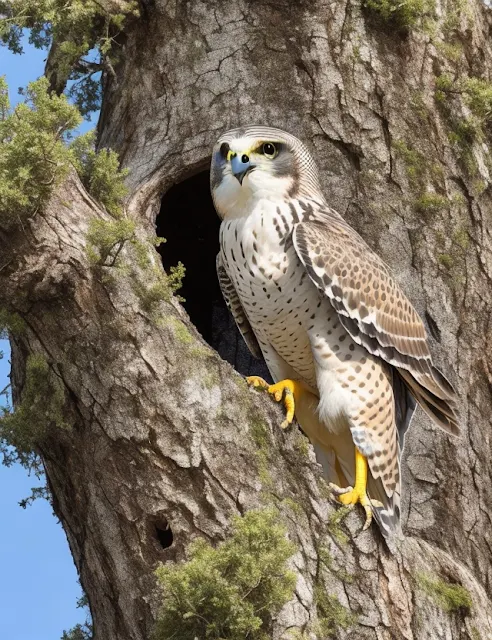


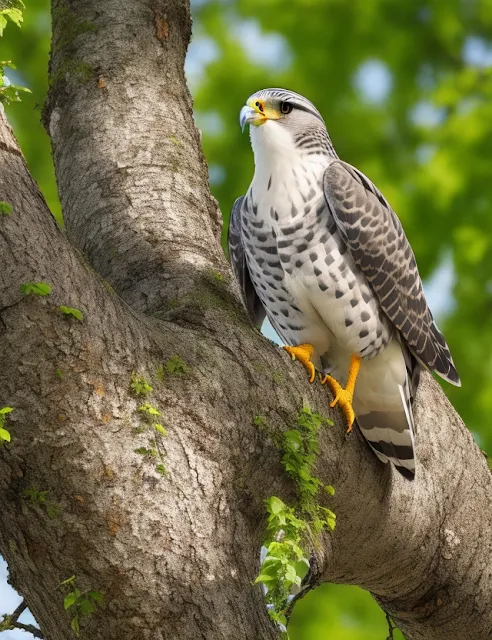
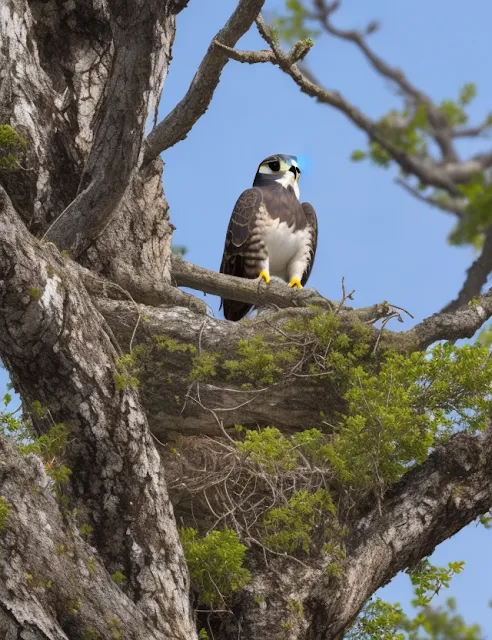



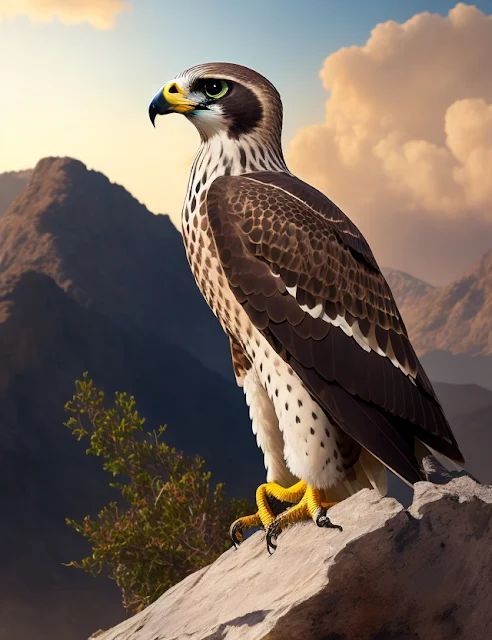
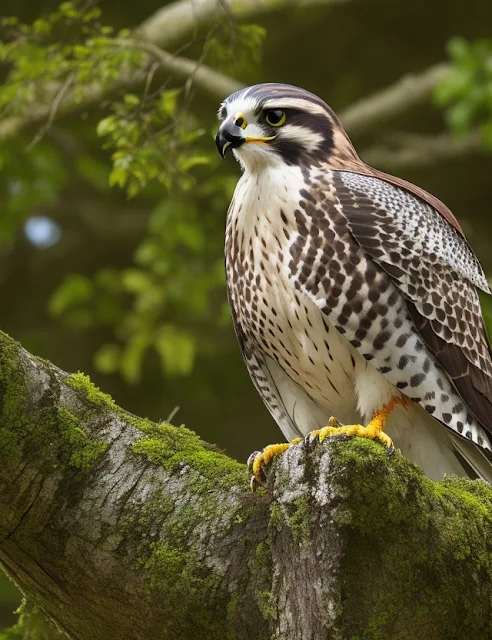
.jpg)